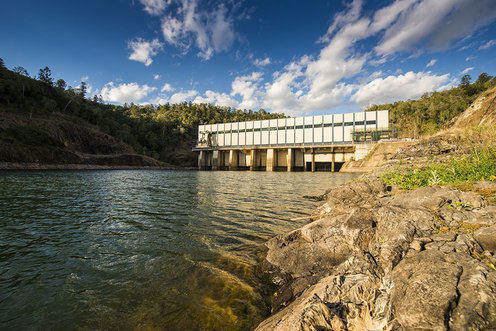The shape of the Queensland wholesale electricity market is changing shape rapidly as the share of renewable energy grows, particularly the amount of solar.
As we have noted in recent articles, Queensland has been experiencing negative prices in the day-time hours on almost a daily basis in the last month or two, and David leitch noted that one middle of the day pricing interval averaged minus $4/MWh through the month of August – which, we should remind ourselves, is winter.
Even the Australian Energy Market Commission has noted the “glimpses of a new market dynamic” in the Queensland market, writing a short blog post noted the slew of negative pricing events.
(See also our latest story: Solar farms switch off en masse as coal plants flex their muscle in Queensland.)
These negative prices are not a bad thing in themselves, but they will encourage changed behaviour. When there was only coal, electric hot water systems were switched on only at night time to minimise those negative prices, and as the regulator recently noted, negative prices also happen when coal fired power stations decided to lift capacity, and would rather pay others to take their output than switch off.
Negative prices also offer an opportunity for storage installations – both pumped hydro and grid-scale batteries – to charge up cheaply (or get paid to do so), and then sell their stored output at a time of greater demand and higher prices.
Queensland does not have any grid-scale batteries yet in operation, but it does have the hitherto little used Wivenhoe pumped hydro storage facility, located not far from Brisbane and with a nominal capacity of 500MW.
Wivenhoe has been very busy in the winter months taking advantage of the low and sometimes negative prices in the middle of the day. And here is a remarkable graph – its charging and discharging in August when, apparently for the first time, it pumped only during the day and not once at night.
This graph above – from Dylan McConnell at the Climate and Energy College – show Wivenhoe – soon to be operated by the nearly formed “CleanCo” generator, and to run in competition (one hopes), with the two other state-owned but largely fossil fuel-based Stanwell and CS Energy) getting very busy in the middle of the day.
It pumped only the excess solar, and generated only in the early morning peak, before the effect of solar took hold, and in the evening peak, as the sun set and solar output faded. Remember, these are averages over the month, not just one particular day.
According to McConnell, the weighted market value for pumping/charging was about $18.39/MWh and the weighted market value generation/discharging was around$116.02/MWh. But that doesn’t necessarily translate into pure profit, because the round trip efficiency of the pumped hydro facility is not necessarily that great, probably little more than 60 per cent.
 Meanwhile, LNP MPs Keith Pitt and others who have been advocating that Queensland would be better off cut off from the grid got a taste of what that might look today when an outage on the NSW side of the border effectively limited exports from the sunshine state to its southern neighbours.
Meanwhile, LNP MPs Keith Pitt and others who have been advocating that Queensland would be better off cut off from the grid got a taste of what that might look today when an outage on the NSW side of the border effectively limited exports from the sunshine state to its southern neighbours.
And because the sunshine state was, well, sunny on Wednesday, and solar was producing at huge levels, the fact that the state could not export, and because the main coal generators did not want to ramp down or switch off, prices spent most of the day in negative territory – including near the market floor of minus $1,000/MWh.
In the end, many solar farms actually switched off at various points of the day, because coal generation actually increased when prices were near the price floor.
We go into that in more detail in another article today. See our story: Solar farms switch off en masse as coal plants flex their muscle in Queensland.
Now, that might be fun to look at – but it’s hard to see how that would be sustainable for Queensland, unless the LNP decided they should close down all the wind and solar farms in the state so the coalers can burn fossil fuels and be paid accordingly. But let’s not give them any ideas.











